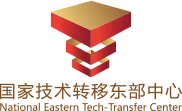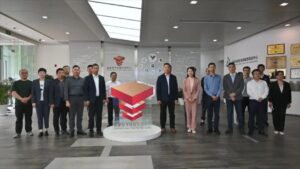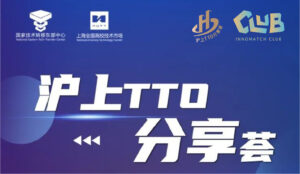It is high time to accelerate the deep integration of science and technology with the economy by promoting "entrepreneurship and innovation for all" through international technology transfer.
With the advent of economic globalization and the knowledge economy, patent technology has become an important capital, not only a competitive advantage for enterprises in the international market, but also an important driving force for the development of national scientific and technological innovation. Through international technology transfer, on the one hand, it can promote the coordinated development of the domestic regional economy, and on the other hand, it can expand the layout channels of overseas intellectual property rights of enterprises.
Deep integration of technology and intellectual property in the era of dual creation
In the era of "mass entrepreneurship and innovation", a new round of scientific and technological revolution is gathering momentum, and Chinese enterprises are constantly accelerating their global deployment through scientific and technological innovation. The deep integration of technology and intellectual property rights will help start-ups to do patent layout in advance and establish competitive barriers, which will help enterprises to better transform technology into productivity and improve their market competitiveness. Intellectual property business includes creation, management, protection and use, especially in the creation, protection and use of these three aspects are closely related to science and technology innovation.
The combination of technology and creation is mainly through the discovery and analysis of competitive intelligence to guide the direction of technology research and development and stimulate innovative thinking in scientific research; and through the combination of protection and technology, the technology will be protected by law, so that more science and technology enterprises will have more incentive to innovate. Having intangible assets, assets that don't pan out will not generate profits and will not allow us to close the loop on our investment in innovation and technology so that they can be rolled over. "
To address the pain point that startups often have difficulty and costly financing, he pointed out that intellectual property is often one of the barriers to financing for startups when they apply for financing.
Until 5 years ago, whether a company had intellectual property or not was not of interest to investors. But from 2015 onwards, investors started to pay attention to whether their portfolio companies had patents, which in turn would focus on whether they had patents for inventions; by 2016, investors were increasingly interested in startups with quality IP because they equated quality IP with technological barriers.
Zhao Yonghui, director of the Innovation Promotion Center of Guangzhou Zhihua Park, added that IP as a business tool can help the regional, national and global economy.
He cited the Zhongshan lighting industry as an example of local enterprises enjoying the rewards of intellectual property rights through rapid licensing, rapid protection, enforcement and coordination of intellectual property rights, as well as through the proposed dual-track system of administrative and judicial protection.
He said that in the past, when a lamp was produced, companies were reluctant to put it out for fear of being infringed, but today's lamp companies are willing to produce a lamp for 10 days and apply for patent protection, so that the patent and the lamp can go to the market together. This promotes a virtuous circle of innovation to a considerable extent, making people dare to invest their new profits in innovative designs.
For startups on how to protect their creative innovation. Nie Zhi suggested that they should live within their means. "In the case of Internet companies, for example, the first step is to establish their own brand image, which is the company's trademark, including the company name, mainstream products and services; the second step is to have the technical tools on which the core business model is based, which can be the vehicle dispatching technology and location navigation technology used in Drip Taxi, or the smart lock technology used in Mobike, etc., these The technology tools all need to be laid out early by companies."
In addition, Zhao specifically cautioned that startups should first pay attention to the application scenarios of the technology when laying out their patents. He cited the autofocus technology in Honeywell's scanners as an example, pointing out that when the company applied for a patent, it not only applied for the application of the technology in the scanner, but also applied to expand the application scenario of the technology to include the autofocus of the camera.
"As you can see, intellectual property can not only protect its own patents, but cover all the patent layout in all the application scenarios that this patent can be used in, i.e., grab more territory in the technology field." In addition, he believes that companies should also focus on trademark, patent and copyright strategies.
He pointed out that aesthetically pleasing crafts can be doubly protected with design patents and copyrights, "For example, the appearance of some lamps can apply for both a design patent and a copyright registration, and because copyright protection is longer, 'double protection' can be achieved for higher value crafts. "
According to Zhang Han, most of the entrepreneurs in startups are employees of the company. Therefore, entrepreneurs need to pay special attention to one point - to control the risk of disputes over the ownership of trade secrets and job invention patents.
"According to the national patent law, an entrepreneur's patent for doing the same product or technology within one year of leaving the company is a job invention. We had a case where the IPO (Initial Public Offerings) of the company was almost affected because of a dispute over the ownership of the job invention."
In addition, he also suggested that companies should pay particular attention to the wave of trademark and brand cybersquatting. He explained that in 2016, especially with the rapid development of 020 e-commerce platforms, they found that start-ups often neglected trademark application and protection: "We once came across a listed company from Hong Kong, some of its related trademarks had been cybersquatted by mainland companies. This company subsequently spent a huge amount of money that could not cover the losses caused by the cybersquatting of its trademark."
Ever-changing focus on the new situation of international technology transfer
In recent years, enterprises of various countries are transforming from manufacturing globalization to innovation globalization, while Chinese enterprises are also deepening their integration with the world's scientific and technological resources in the wave of innovation transformation, promoting the transnational and cross-regional transfer and application of science and technology through technology trade, technical services, international cooperation in production and research and development, and further realizing the deep integration of industrial capital, financial capital and intellectual capital.
It is understood that the current mode of international technology transfer has changed from technology trade and engineering contracting to technology licensing and cooperative research and development, which are the main forms of technology transfer.
"The new trend of international technology transfer in China is mainly related to the general environment, with most Chinese companies willing to 'go global', especially in Europe, the US, Japan, Singapore and Israel. The reason for this is mainly because the companies themselves have a relatively weak research base, so they have the need for international technology transfer," Zhang Han said.
With 25 years of experience in the cooperation between government and social capital, Yan Jun of Jun Zejun Law Firm looks at the latest situation of international technology transfer mainly from the perspective of investors. He believes that there are fewer and fewer simple technology transfers, and the shift is towards the dual innovation of technology business models and business formats.
He went on to say that technology is no longer singularly represented as a patent, but can be integrated with trade secrets and process standards. "In my view, this makes the technology more valuable, and it makes it somewhat industrializable. As the technology is transferred, it may be accompanied by a corporate investment, an acquisition, or even a joint venture."
In the interviews, many interviewees indicated that the international technology transfer of Chinese enterprises is currently facing both external and internal challenges. In terms of external challenges, Zhao believes that there is often a lack of trust between two, three or even multiple parties in international technology transfer, including overseas companies and entities that own technological inventions. "This is the first obstacle for foreign companies and their technologies in dealing with Chinese companies. Therefore, having a registered international technology transfer manager to act as a bridge can increase the foundation of mutual trust."
At present, there is an asymmetry of supply and demand information and a lack of transparency in technological achievements, according to Nie Zhi. For example, researchers know the value of the technology, but do not understand the market; enterprises are familiar with the market, but do not understand the value of the technology, resulting in inefficient conversion and transfer.
The main internal challenge is the lack of human resources. As a high-end service industry, international technology transfer involves all aspects of the entire industrial chain, and therefore requires high-level and complex professionals.
"Since the technology being traded in the international technology transfer process is actually a virtual thing, it requires professional assessment by a professional technology transfer manager and helps companies to acquire the technology and then be able to use it for real," Zhang Han said.
A number of interviewees expected that through the ATTP (World Alliance of Technology Transfer Professionals) certification course, talents and enterprises with a need for international technology transfer would be brought together to form an online and offline exchange circle, giving full play to the due value of international technology transfer talents and promoting the rapid and effective transfer and transformation of scientific and technological achievements.
(Source: Golden Card Project)




